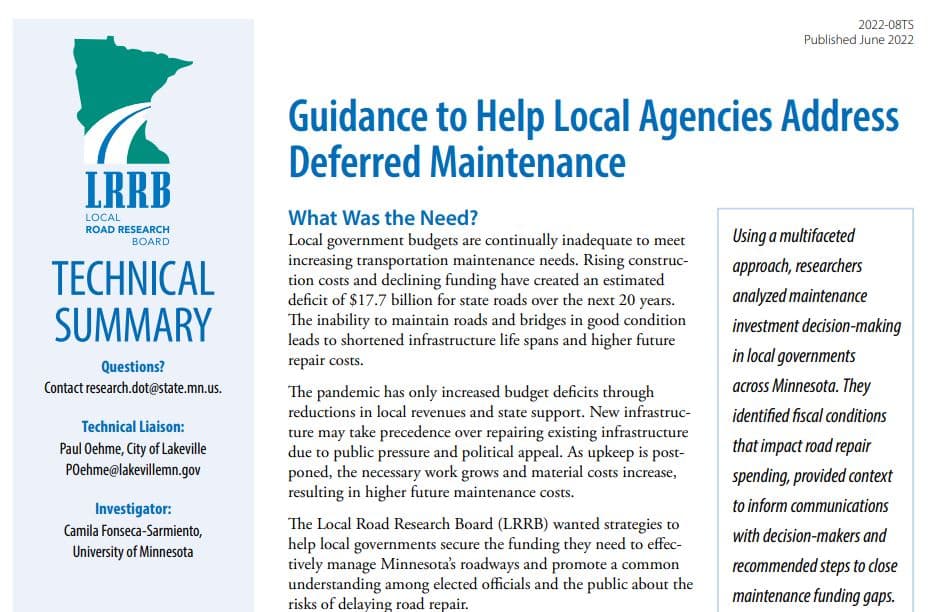Aug 25, 2022
Minnesota DOT Research Offers Guidance to Help Local Agencies Address Deferred Maintenance
BY AsphaltPro Staff

Budget shortfalls, higher material costs and the ongoing pandemic are just some of the causes behind Minnesota’s local governments postponing road maintenance work. However, delaying road maintenance activities in the short-term can result in deteriorating asset conditions, which only makes maintenance and repair more expensive.
That’s why the Minnesota Department of Transportation has conducted a recent project to help local transportation agencies make better-informed expenditure decisions and understand the impacts of deferring maintenance on state roads.
“The goal of this project was to better understand how local governments across the state make transportation maintenance expenditure decisions, the primary factors influencing those decisions and the impacts of deferring maintenance on state roads,” reads the report.
Project Details
Researchers engaged in a multifaceted approach to analyze transportation maintenance decision-making in local governments across Minnesota, from which the research team was able to develop case studies on local government road maintenance decision-making.
“Building on the learnings from the case studies, researchers conducted a survey in which representatives from 31 local Minnesota governments described the size and condition of their roadway networks, challenges with managing maintenance investments, funding gaps and strategies they use to minimize deferred maintenance,” the report continues.
Although infrastructure conditions and safety needs primarily drive local government maintenance investments, the research team found other factors also play a role, including infrastructure age, maintenance history, public input, material and labor costs, and staff capacity.
Research Findings
Ultimately the researchers concluded that although overall investment has generally increased, there was a lot of variation in the agencies’ unmet needs ranging from $1 million to $30 million to restore pavements to acceptable condition levels.
Researchers also found that the larger the share of federal and state grants in total revenues, the smaller the share of total roadway expenditures is spent on maintenance. “This finding suggested that intergovernmental funding is invested in transportation projects other than maintenance, such as construction,” reads the report.
On the other hand, the more debt a local government pays back, the more maintenance spending tends to increase. The report suggests this may be due to a hesitancy to invest in construction under those circumstances.
With decreased state support and limited local funding capacity, the report states cities and counties are trying to close maintenance gaps by using new funding sources such as taxes or fees, completing more work in-house and performing more preventive maintenance.
Researchers’ Recommendations
Based on their findings, researchers have several recommendations to help local transportation agencies secure and maintain adequate funding to meet their road maintenance needs, including the following:
- Adopt a standard definition of deferred maintenance.
- Identify pavement and bridge condition targets.
- Estimate funding needed to achieve and maintain condition targets.
- Monitor and report road conditions, trends and target achievement.
- Plan and coordinate maintenance activities with other stakeholders.
- Maintain a consistent funding stream for roadway maintenance activities.
Going forward, the conclusions and recommendations from this research will serve as a reference tool for local public works directors and engineers who are responsible for budgets and work with elected officials to secure adequate maintenance budgets.